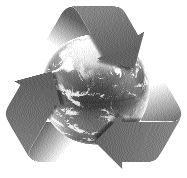
The manufacture of pulp and paper products is driven in part by the environmental needs of our customers. Environmental life-cycle assessments (LCA) or life-cycle inventories are becoming an accepted …
The manufacture of pulp and paper products is driven in part by the environmental needs of our customers. Environmental life-cycle assessments (LCA) or life-cycle inventories are becoming an accepted and credible way to address these needs.
WHAT IS LIFE-CYCLE ASSESSMENT?
LCA looks at all the environmental impacts of a product (i.e. paper) from the minute the tree is harvested, to the minute the paper is sold.
Life cycle management (LCM) is a major tool to reach sustainability through product and process design and management. It consists of the optimisation of environmental, economic and social performance of a product or service through its many life stages — from material extraction and transformation, production, use and final disposal. This is done by interpreting:
Environmental impact data (eco-indicators from LCA)
Economic data (inc. costs external to production)
Values of all stakeholders
Many multinational corporations have already initiated the transformation of their management mode to integrate LCM elements. The implementation of sustainability has allowed these firms to benefit from competitive advantages like:
Reduction in operating cost
Improved products and processes
Reduction in risk and responsibility
Better brand image
Improved personnel motivation
Improved supply chain management
Higher value on the stock markets
Improved relations with consumers, governments and the public at large.
The heart of the LCM approach is LCA methodology. This analytical tool, standardised by ISO (ISO 14040, 14041, 14042 and 14043), allows the quantification of environmental impacts associated with a product, service or process. The Society of Environmental Toxicology and Chemistry (SETAC) defines LCA as “an objective process to evaluate the environmental burdens associated with a product, process, or activity by identifying and quantifying energy and material usage and environmental releases, to assess the impact of those energy and material uses and releases on the environment, and to evaluate and implement opportunities to effect environmental improvements. The assessment includes the entire life cycle of the product, process, or activity, encompassing, extracting and processing raw materials; manufacturing, transportation, and distribution; use/reuse/maintenance; recycling; and final disposal”.
LCA is the main analytical tool for the planning of sustainable development as it allows the consideration of technical, economical and sociological aspects. LCA can be used as a decision support tool for:
The choice of processes or end-of-life fate
Investment in new processes or optimization of existing processes
New product or service designs
Logistics organisation
Elaboration of public policy
Formulation of ecolabel criteria, etc.
SETAC sees LCA as consisting of three components: the life cycle inventory (LCI), life cycle impact analysis, and life cycle improvement analysis.
LIFE-CYCLE INVENTORY (LCI)
An LCI consists of a mass and energy balance conducted on selected parameters over system boundaries that include the important components of a product’s life cycle.
LCI calculations comprise measurable raw material, energy consumption, and emissions per product unit, generally one tonne or a single square metre of paper. For example, over the life cycle of a thousand units of your product you may have generated 12 pounds of SO2 and consumed 31 MBTUs of energy. The scope of LCI extends from raw materials and energy procurement through the production of pulp and paper to the delivery of paper to the customer’s warehouse. Some of the data needed for a LCI at light-weight coated paper mill are as follows:
Power plant (data per main boiler)
Different fuels (wet tonnes, dry solid contents and energy content)
Electricity consumption and generation
Air emissions
Solid waste generated
Amount of boiler make up water and cooling water
Power and steam consumption for different sub-processes (debarking, pulping, raw water pumping, wastewater treatment plants, boiler houses and buildings)
Total raw water amount and per sub-processes
Process and cooling waste water amounts per sub-processes
Effluent treatment plant data (input load and output load, AOX, BOD, COD, TSS)
Solid waste amounts to landfill per sub-processes
Debarking plant (wood use and bark amount.)
Pulp production and consumption per paper machine
Per paper machine — consumption of pulps, filler, wet end starch, coating minerals, latex and coating starch and titanium dioxide, natural gas.
INDUSTRY USE OF LCA AND LCI
Canfor was among the first in Canada to apply LCA. Canfor’s Michael Bradley points out that LCA first became useful in the 1990s when addressing the “hot” topics of that time (i.e. environmental impacts due to AOX and dioxins in mill effluents; the demand for TCF pulp and forestry issues.) LCA, due to its holistic view of environmental loads, added some equilibrium to the debate. Canfor also partnered with Stora Enso and publisher/printer Axel Springer, and applied LCA to the whole chain of pulp and paper production and printing.
LCI calculations are currently used in the development of product-related profiles (PRP) such as the “Paper Profile” and the “Environmental Profile Data Sheet”. These are standardized reporting systems that companies use to report environmental information to their customers.
SETAC has excellent publications on LCA as well as many opportunities for networking in that field due to newsletters and conferences. Visit their web site at www.setac.org.
With special contribution from Dr. Rjean Samson, director of CIRAIG (Interuniversity Reference Center for the Life Cycle Analysis, Interpretation and Management of Products, Processes and Services — Universite de Montreal).
Phil can be reached at phil.riebel@upm-kymmene.com.
Print this page
